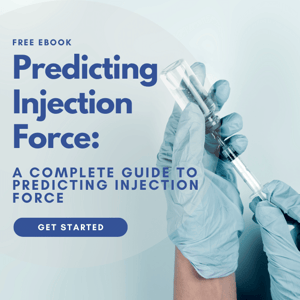
Webinar: Injectability Tutorial
Webinar Download
Download Now!
The Practical Guide for Calculating Injection Force from Viscosity Measurements
The viscosity of protein or antibody formulations is often measured to assess injectability. In our next webinar, we will go step-by-step through the process of calculating the injection force from actual viscosity data.
It is quite common for protein solutions to shear thin at rates found within the syringe needle during delivery. Therefore, examples will include both Newtonian and shear thinning protein solutions to clearly illustrate the importance of the viscosity profile on the prediction so that quality candidates are not falsely rejected.
Download to access the webinar!
.jpeg?width=300&name=Woman%20scientist%2c%20documents%20and%20hands%20writing%20_575258496-min(1).jpeg)
TOUCH
Read
Applications
ReadApplications

Read
Testimonials
ReadTestimonialsGo to page

Browse
Webinars
Browse WebinarsGo to page
.png?width=200&height=58&name=RheoSense%20Logo%20(REGISTERED).png)



